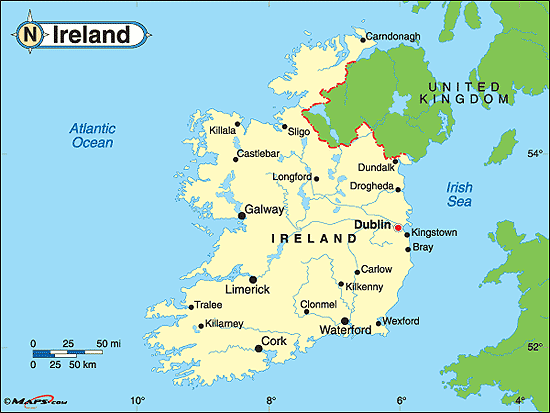Every once in a while (well, ok, often) I get the urge to travel. This might seem ridiculous, since I’m living in Ireland, so you might think, “You’re constantly traveling.” But there’s a difference between having a temporary home base in a foreign country and actively being on the road.
I got such an urge on Friday night, and realized that, as my class on Saturday had been cancelled ahead of time by my teacher, I had a few days off with no obligations in Dublin. So, I pulled up a map of Ireland, and thought, “hmm, where do I want to go?”
I’d recently heard that the Sligo area is beautiful, so a quick look into bus tickets and hostels later, I had everything booked and was packing.

Unfortunately, this was one of those trips where lots of things went wrong, but ultimately I still remember it as a really great experience.
After righting the struggles I encountered when I first arrived in Sligo (getting lost, locked out of the hostel, unfriendly hostel-manager), I realized that everything to do in Sligo closed at 5 (and after waiting to get in to the hostel, it was about 5:05). So, clearly, the only thing to do after wandering around in the late-afternoon sunshine was to get cider by the river.
Since I’d heard that the landscape around Sligo was beautiful, my plan for the next day was to do some hiking. First, though, I went to the Abbey (after having just missed it the day before). The ruins of the Abbey are pretty impressive, given that it was built in, oh, the 1200’s.
William Butler Yeats mentioned the Abbey in a few of his poems, and as I would come to find out, Sligo is a Yeats haven. He’s closely connected with the area, having spent summers there throughout his adolescence, and the region is often directly referenced in his poetry.

After hoping a bus to Strandhill to get to Knocknarea Mountain, I discovered an additional little walk along the coast of Strandhill that ultimately hooked up with the mountain hike. It wound around sand dunes, over grassy hills, and even skirted the Sligo Airport runway (there are signs warning you to “stay back when lights are flashing”).
The main feature, however, is the ruins of the small Killaspugbrone Church, dating from 1150-1220. Legend has it that St. Patrick visited the Church and tripped on the rough ground and lost a tooth. He presented the tooth to Bronus, the bishop of the church, as a show of good faith (or something). The tooth was kept in a gold shrine, and is apparently now on display in the National Museum. I must have missed it when I was there.


In addition to being a popular hike, Knocknarea is famous for the cairn of stones at the top. Although it resembles nothing more than an impressive pile of stones, it’s believed to contain a Neolithic passage. But, no one’s bothered to check. Probably because Ireland is home to so many Neolithic structures, really, what does another one matter?

Legend has it, however, that the cairn is the burial place of Queen Maebh (Anglicized as Maeve), and archeologists believe the mound dates to 3,000 BCE (that’s FIVE THOUSAND YEARS AGO).
If that’s not cool enough, there are also several other structures on the summit, though none as large as the cairn. It is believed that the whole area was the site of religious rituals, and the other monuments may have been small passage tombs.
I was pretty exhausted after the hike, so I decided that I would take the bus back to Sligo and relax for the rest of the evening. But, after getting back to my hostel, I realized I could hear music from somewhere in town. After a quick Google search of “April 24 music concert Sligo,” I found out that Sligo was currently celebrating the calendar anniversary of the Easter Rising with an all-day concert. Most of the commemoration events happened around Easter, but Sligo decided to wait until the deluge of festivities was mostly over (although, let’s be real, they’ll be going on for the rest of 2016) before hosting its own. April 24th was Easter Monday in 1916, and the day the Rising began.
So, of course, I had to go check it out. There was a long lineup of bands playing all day, but I got there in time to see Rackhouse Pilfer, a talented bunch of musicians who were quite possibly sporting more flannel and man-buns and braids than I’d ever seen in one place (I tease, but they played great music).
The last band to play before the fireworks was Dervish. Here’s a short clip that I took, complete with dancing (although it’s hard to see), of the last song of the evening.










Pingback: “Because of Star Wars” (or, a trip to Donegal) | [The Year of] Living Dangerously Happy
Pingback: Let’s go to Ireland: Tips from the podcast – Going Out Your Door